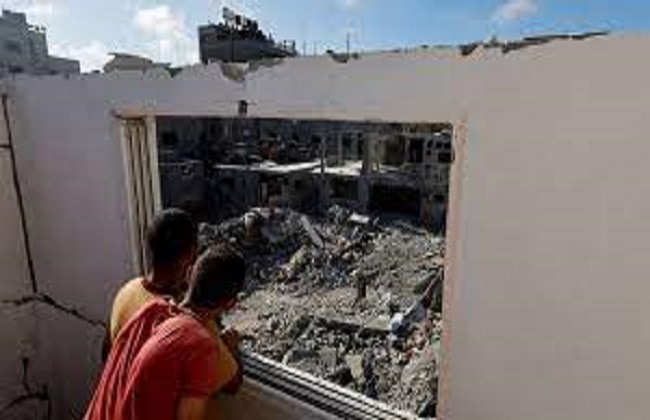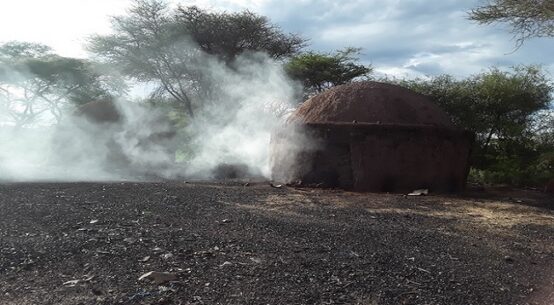
One month into the war in Gaza, Palestine has already seen major setbacks in development that will have severe ramifications for the people of Palestine that will impact any future efforts toward its economic recovery.
A new report from UNDP and the UN Economic and Social Commission for West Asia (ESCWA) has projected the fallout of Palestine’s socioeconomic development as the conflict in Gaza enters its second month. Titled The Gaza War: Expected Socioeconomic Impacts on the State of Palestine, the joint report warns that the loss of life and infrastructure because of the conflict and military siege will have long- and short-term consequences on the entire state and will see a serious regression in development that would take years for the state to recover from.
Since October 7, military operations in the Gaza Strip have caused dramatic downward trajectories in the state’s economy, public infrastructure, and development.
Rola Dashti, the Executive Secretary for UN-ESCWA, remarked on the “unprecedented deprivation of resources” since the conflict escalated. In a press briefing, she warned that this deprivation of resources, including public services, health, utilities, and freedom of movement, are emblematic of multidimensional poverty.
Over 45 percent of housing has been destroyed by bombardments; 35,000 housing units have been totally destroyed, and 212,000 units have been partially damaged. Over 40 percent of education facilities have been destroyed, which has left over 625,000 students with no access to education.
The report estimates that Palestine’s GDP is expected to decline by 4.2 percent within the first month of the war. A further loss of GDP is expected by 8-12 percent if the war continues into the second and third months. The poverty level is also expected to rise to 20-45 percent. These projections were predicted for the duration of the war, going on up to three months. As the economic value is largely centralized in the Gaza Strip and the West Bank, it will have a ripple effect across the region. Unemployment in Gaza was already an issue, with a rate of 46 percent, compared to 13 percent at the West Bank. Yet, since the start of the war, around 390,000 jobs have been lost. The continued military involvement has already caused disruptions to trade and the agriculture and tourism sectors.
Other effects of the war, such as a reduction in trade and investments, will only further add to the overall insecurity of the State. There is also the risk that investors will take a more cautious approach when the region displays such volatility. The impact on neighboring countries would be to redirect resources from development to expanding security.
Hospitals have been contending with repeated attacks since the start of the war while keeping operations going as supplies dwindle. Sixteen out of the 35 hospitals in Gaza have been forced to suspend their operations due to fuel shortages. This included Al-Awda Hospital in northern Gaza, the only hospital that was providing maternal health services, where 80 percent of its patients were women and children. On Wednesday night, a spokesperson announced that the hospital would be forced to close down operations due to fuel shortages.
The threat to their safety and disruptions to education, healthcare, housing, and employment have already forcibly displaced over 1.5 million people in Palestine in just one month. The number of fatalities in this current conflict has now exceeded 10,000, including 4,104 children. It stands in stark contrast to the death toll during the major conflict in 2014, which capped at 2251. As Dashti told reporters, “There are faces behind these staggering numbers.”
Assistant Secretary-General and Director of the Regional Bureau for the Arab States for UNDP Abdallah Al Dadari mourns the loss in overall human development. These compounding losses and setbacks will “bring [Palestine] back to 2005, in terms of development”, he said.
Should a ceasefire be put into effect, even immediately, the time for recovery will be long and complex. Al Dadari remarked that rebuilding the lost infrastructure would be a challenge. He added that efforts toward a “top-down reconstruction” that did not include the participation and consideration of the Palestinian people would have “structural deformities” shortly thereafter. Many of the facilities, including hospitals, support centers, and schools, were established and supported by humanitarian organizations, such as UNRWA. Palestine is dependent on these facilities and on humanitarian assistance.
The UN report concludes that post-war recovery efforts should take a different approach, one that will not only deal with the immediate humanitarian and economic needs of the affected civilians through funding. The root causes of the conflict and the tensions in the region must be addressed, Dashti said. With a guarantee from all involved parties, is there a possibility for what the UN calls sustainable peace?
Naureen Hossain is an IPS correspondent based in New York.


